Quilts and duvets are important features of your bedding that contribute to a comfortable sleep. Getting the right duvet for yourself can make all the difference. From the size to the filling, there are a lot of factors to consider when buying quilts and duvets.
Did you know that you have to take the weather conditions into account when purchasing a quilt? The filling and the weight of your duvet depends on how hot or cold it gets where you live. This quilts and duvets buying guide will help you choose the right duvet for yourself.
Quilts, Duvets and Doonas!

There are several names you can use for your comforters, comforter being one of them. However, don’t get confused by these terms since all of them mean the same thing. If you are trying to find a difference between quilts and duvets, there is none. Except for the fact that quilts can sometimes be referring to a decorative patchwork, it usually refers to a covering you use when you sleep. As far as doonas are concerned, it is local slang for duvets and comforters.
What’s the Weather Like?
The weather conditions make a lot of difference on the kind of quilt you should buy. If your duvet gets too hot or cold at night, it is recommended that you buy one that suits the climatic conditions of the area you live in.
Furthermore, the temperature outside is not the only factor you need to keep in mind. Your body temperature makes a huge difference in the kind of duvet that would suit your needs. Gender, medical conditions and age can determine your body temperature which in turn can influence the kind of duvet filling and weight that is suitable for you.
If you live in an area that has erratic weather changes, it is suggested that you have at least two duvets for both cold and warm temperatures. These duvets are made specifically to cool down or warm up your body during major temperature fluctuations.
Weight and Size
Buying the right size quilt for your bed is crucial. You don’t want to wake up feeling cold at night because your quilt is too small. It is often recommended that you buy a quilt that is bigger than the size of your bed especially if you share it with a partner.
Additionally, the casing for your quilts also makes a lot of difference in the feel and temperature. There are usually two kinds of casings for quilts available in the market- boxed and channelled. The difference between the two types of casings is that they are sewn differently. For a better distribution of filling, boxed quilts are the way to go. Boxed quilts have small squares sewn into them. Whereas channelled quilts are sewn straight from top to bottom. This makes it easier to move around the filling within the quilt.
The weight of the quilt depends on the filling and the size along with your movement while sleeping. If you move a lot at night, a heavy quilt might be the right way to go. It also depends on personal preference. Some people like to have a heavier quilt to help them sleep while others prefer a much lighter quilt.
| Bed Size | Quilt Size |
| Single | 140 x 210 cm |
| King Single | 160 x 210 cm |
| Double | 180 x 210 cm |
| Queen | 210 x 210 cm |
| King | 210 x 240 cm |
| Super King |
270 x 240 cm |
Understanding GSM
The term GSM will often get mentioned when you are purchasing a duvet. It means grams per square metre that refers to the weight of the filling in the duvet. The weight of the filling determines how warm or cold the duvet will be. So, if you are wondering what determines whether you should use a certain blanket during winter or summer, it is the GSM.
GSM ranging from 150 to 300 will be just right for summer or hot climates. This range is also good if you live in tropical climates. You just need to get the right combination of the perfect gsm and filling material that is moisture absorbent. 350 to 400 GSM is perfect for Autumn and spring weather. These quilts will usually be perfect for most climates as it falls in the middle of the GSM range. A GSM beyond 450 will be great for colder climates.
Filling
If you want comfortable sleeping arrangements, choosing the right fillings for your duvet is vital. The right filling will help you regulate your body temperature and ensure a comfortable sleep. Furthermore, most of the fillings available for duvets are also hypoallergenic which is good for your hygiene.
Microfibre

Microfibre quilt fillings are usually made up of synthetic fibres. These quilts are machine washable and quite low maintenance. Furthermore, microfibre is quite a fine material and feels similar to down. It is a good option if you’re on a budget. While microfibre quilts are not the most durable options, they are very soft and comfortable. Another important advantage of this material is that it is hypoallergenic.
Feather and Down
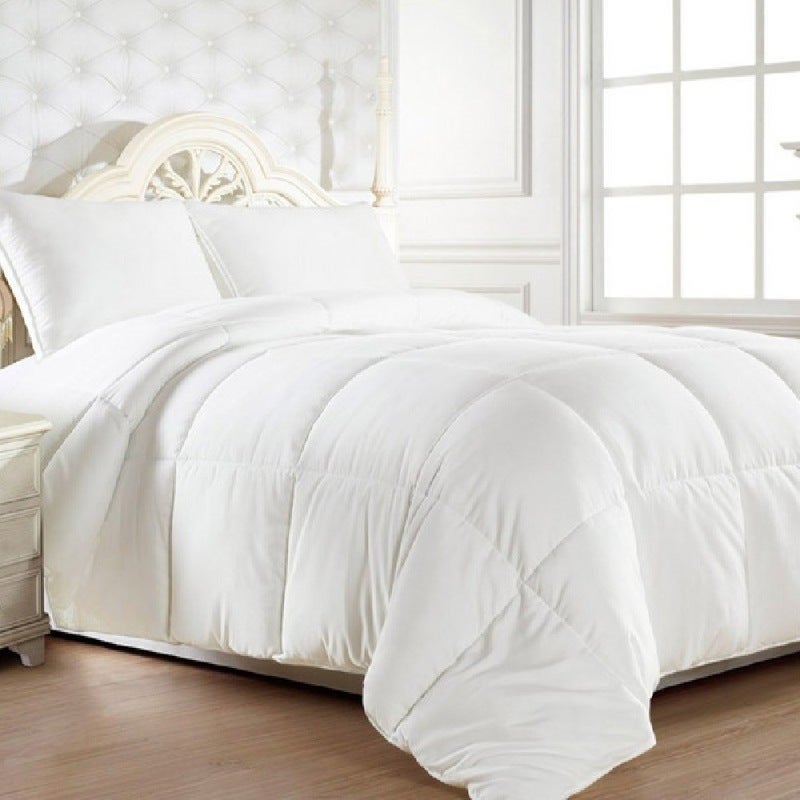
A more durable and comfortable option than microfibre, feather and down duvets are quite a popular choice. If you’re looking for comfort and warmth, down and feather duvets are one of the best options. Feather and down duvets are great for all seasons, however, you can go for a warmer feather and down quilt if you want. This will depend on the amount of down to feather proportion within the duvet. More down results in a warmer quilt.
Being naturally occurring fibres, feather and down is extremely breathable and lasts longer. Its breathability also makes it a great hypoallergenic. The combination of feather and down makes the perfect duvet for your household.
Bamboo
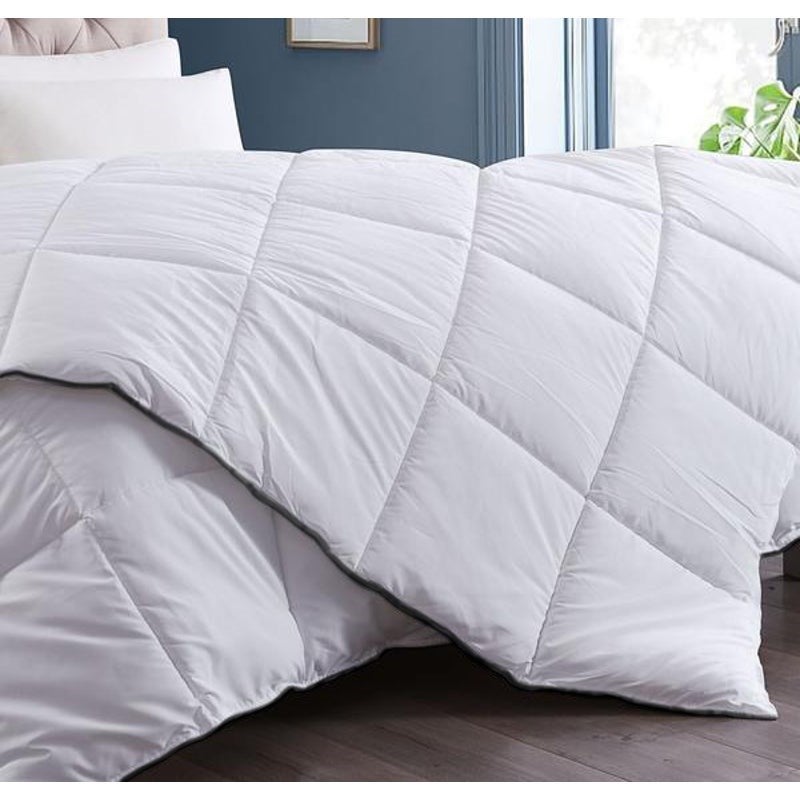
An eco-friendly and lightweight filling, bamboo fibre is a great choice when it comes to quilts. It is a very popular choice amongst most people since it is easy to handle, breathable and keeps allergens at bay.
Bamboo is a natural fibre that is long-lasting and perfect for any temperature. No matter what the weather is like, a bamboo quilt will regulate your body temperature, ensuring perfect sleep every time.
Wool
If you are sharing your duvet with a partner, wool might be the choice for you. Wool quilts have the ability to adapt to your body temperature. So, if you are sharing the duvet with another person, you will still be able to sleep comfortably. Wool quilts prevent dust mites, allergens and bacteria making them the perfect filling for someone with skin conditions or breathing problems.
However, if you want a quilt that can be washed in the washing machine then wool quilts might not be the ones you’re looking for. Wool quilts can usually be dry cleaned only.
Cotton
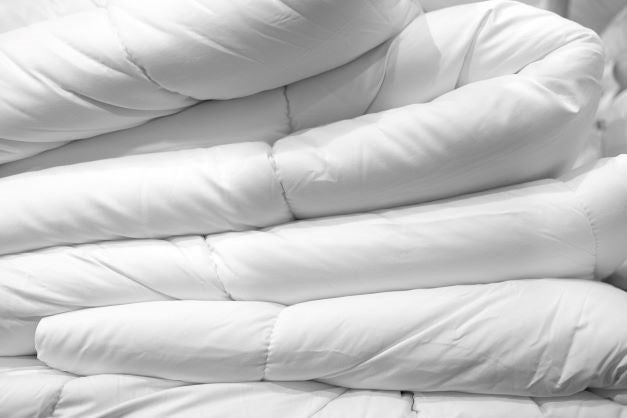
Cotton duvets are ideal for summer. They have a cooling effect since they absorb moisture. If you enjoy a lightweight duvet, this is the perfect choice for you. While cotton duvets are great for the summer, you can find ones that can be used in colder weather as well. Just go for a cotton duvet with a higher GSM. A cotton duvet between the range of 350gsm to 400gsm will be perfect for autumn and winter.
Silk
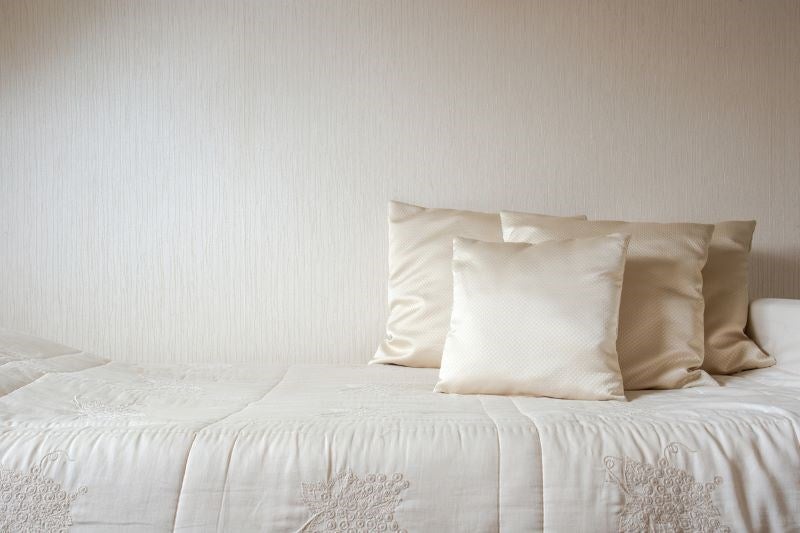
Healthy and luxurious, these two terms best describe silk duvets. Another natural fibre, silk duvets are perfect for all weather conditions as it regulates body temperature giving you the most comfortable sleep every time. It is an extremely breathable fabric and a natural hypoallergenic.
Silk duvets are lightweight and mould to your body when you sleep, ensuring the perfect temperature for your body when you sleep. This filling is usually recommended for people with skin problems or allergies. But, if you don’t mind spending a little extra on your duvet, silk would be a great choice.
Care Instructions
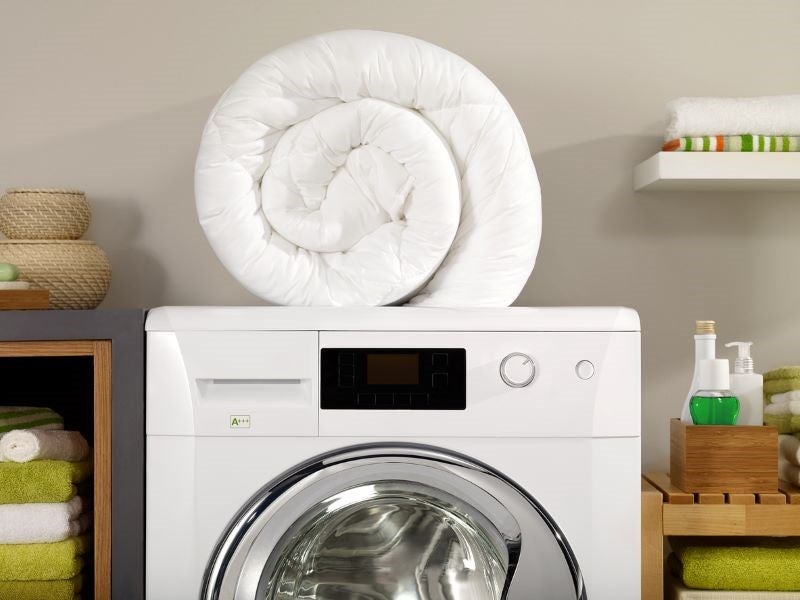
All quilts and duvets come with specific care instructions that you should always follow if you want them to last longer. Some quilts may require hand-wash or dry cleaning instead of a simple machine wash. It is important that you follow the instructions the duvet comes with since that is the best way to maintain the quality of your duvet.
Cotton, bamboo and microfibre quilts can either be machine washed, hand-washed or dry cleaned depending on the product’s care instructions. However, silk requires special attention. Silk duvets will almost always have to be hand washed. Also, silk is a very delicate fabric so if it requires spot correction, it needs to be dealt with immediately using the most gentle cleaning products.
Another important thing to remember is to air out your duvets. This gets rid of any clumps or bacteria that might be sitting within the filling. Even before you use your new quilt, just air it out. It is best to be safe than sorry. Wool needs to be aired out as the process kills any bacteria that might be present, and deodorises it as well.
Choosing the Right Duvet Covers
This is an important step if you want to ensure that your quilt is doing the job it is supposed to do. If you have bought a duvet with a high GSM to keep you warm in the cold winter weather, you should go for a duvet cover material that does the same. Along with the material of the cover, take a look at the material’s thread count. The thread count will determine how the material will feel against your skin. Along with those factors, the size and fit are important to determine the perfect duvet for you. The combination of the perfect duvet cover with your duvet will provide you with the most comfortable sleep every night.


